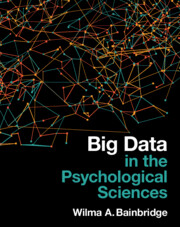Refine search
Actions for selected content:
445 results
Reducing functional dysconnectivity in people with schizophrenia spectrum disorders
-
- Journal:
- BJPsych Open / Volume 11 / Issue 6 / November 2025
- Published online by Cambridge University Press:
- 10 November 2025, e271
-
- Article
-
- You have access
- Open access
- HTML
- Export citation
The potential of ultra-low field magnetic resonance imaging, within dementia diagnosis pathways in the United Kingdom
-
- Journal:
- The British Journal of Psychiatry , FirstView
- Published online by Cambridge University Press:
- 07 November 2025, pp. 1-2
-
- Article
-
- You have access
- HTML
- Export citation
Structural Brain Variability in Recent-Onset and Chronic Schizophrenia: Evidence from Person-Based Similarity Index Analysis
-
- Journal:
- Acta Neuropsychiatrica / Accepted manuscript
- Published online by Cambridge University Press:
- 03 November 2025, pp. 1-23
-
- Article
-
- You have access
- Open access
- Export citation

Big Data in the Psychological Sciences
-
- Published online:
- 23 October 2025
- Print publication:
- 23 October 2025
-
- Textbook
- Export citation
10 - Big Brain Data
-
- Book:
- Big Data in the Psychological Sciences
- Published online:
- 23 October 2025
- Print publication:
- 23 October 2025, pp 175-201
-
- Chapter
- Export citation
Normative amygdala fMRI response during emotional processing as a trait of depressive symptoms in the UK Biobank
-
- Journal:
- Psychological Medicine / Volume 55 / 2025
- Published online by Cambridge University Press:
- 08 October 2025, e304
-
- Article
-
- You have access
- Open access
- HTML
- Export citation
Network localization of genetic risk for schizophrenia and bipolar disorder
-
- Journal:
- Psychological Medicine / Volume 55 / 2025
- Published online by Cambridge University Press:
- 03 October 2025, e299
-
- Article
-
- You have access
- Open access
- HTML
- Export citation
Chapter 16 - Conditioned Fear Learning
- from Section IV - Emotional Learning and Memory
-
-
- Book:
- The Cambridge Handbook of Human Affective Neuroscience
- Published online:
- 16 September 2025
- Print publication:
- 02 October 2025, pp 325-345
-
- Chapter
- Export citation
Social threat, neural connectivity, and adolescent mental health: a population-based longitudinal study
-
- Journal:
- Psychological Medicine / Volume 55 / 2025
- Published online by Cambridge University Press:
- 18 September 2025, e275
-
- Article
-
- You have access
- Open access
- HTML
- Export citation
Brain structure and function in adult survivors of developmental trauma with psychosis: A systematic review
-
- Journal:
- Psychological Medicine / Volume 55 / 2025
- Published online by Cambridge University Press:
- 15 September 2025, e272
-
- Article
-
- You have access
- Open access
- HTML
- Export citation
Intraventricular Primary Diffuse Meningeal Melanomatosis
-
- Journal:
- Canadian Journal of Neurological Sciences , First View
- Published online by Cambridge University Press:
- 12 September 2025, pp. 1-2
-
- Article
-
- You have access
- Open access
- HTML
- Export citation
Neuroimaging genetics and developmental psychopathology: A systematic review
-
- Journal:
- Development and Psychopathology / Volume 37 / Issue 5 / December 2025
- Published online by Cambridge University Press:
- 01 September 2025, pp. 2772-2794
-
- Article
- Export citation
Identifying key brain pathology in bipolar and unipolar depression using a region-specific brain aging trajectories approach: Insights from the Taiwan Aging and Mental Illness Cohort
-
- Journal:
- Psychological Medicine / Volume 55 / 2025
- Published online by Cambridge University Press:
- 29 August 2025, e253
-
- Article
-
- You have access
- Open access
- HTML
- Export citation
Susceptibility-Weighted Imaging: Another Technique to Unveil an Arteriovenous Shunt
-
- Journal:
- Canadian Journal of Neurological Sciences , First View
- Published online by Cambridge University Press:
- 26 August 2025, pp. 1-2
-
- Article
- Export citation
Representation in Brain Imaging Research: A Quebec Demographic Overview
-
- Journal:
- Canadian Journal of Neurological Sciences , First View
- Published online by Cambridge University Press:
- 22 August 2025, pp. 1-11
-
- Article
-
- You have access
- Open access
- HTML
- Export citation
Diazepam modulates hippocampal CA1 functional connectivity in people at clinical high-risk for psychosis
-
- Journal:
- Psychological Medicine / Volume 55 / 2025
- Published online by Cambridge University Press:
- 08 August 2025, e230
-
- Article
-
- You have access
- Open access
- HTML
- Export citation
A whole-brain voxel-based analysis of structural abnormalities in PTSD: An ENIGMA-PGC study
-
- Journal:
- European Psychiatry / Volume 68 / Issue 1 / 2025
- Published online by Cambridge University Press:
- 22 July 2025, e97
-
- Article
-
- You have access
- Open access
- HTML
- Export citation
Corpora Amylacea Mimicking Diffuse Glioma: A Rare Case of Extensive Periventricular Accumulation
-
- Journal:
- Canadian Journal of Neurological Sciences , First View
- Published online by Cambridge University Press:
- 07 July 2025, pp. 1-3
-
- Article
- Export citation
Brain network dynamics following induced acute stress: a neural marker of psychological vulnerability to real-life chronic stress
-
- Journal:
- Psychological Medicine / Volume 55 / 2025
- Published online by Cambridge University Press:
- 07 July 2025, e187
-
- Article
-
- You have access
- Open access
- HTML
- Export citation
Predicting clinical and functional trajectories in individuals with first-episode psychosis by baseline deviations in grey matter volume
-
- Journal:
- The British Journal of Psychiatry , FirstView
- Published online by Cambridge University Press:
- 16 June 2025, pp. 1-9
-
- Article
-
- You have access
- Open access
- HTML
- Export citation


